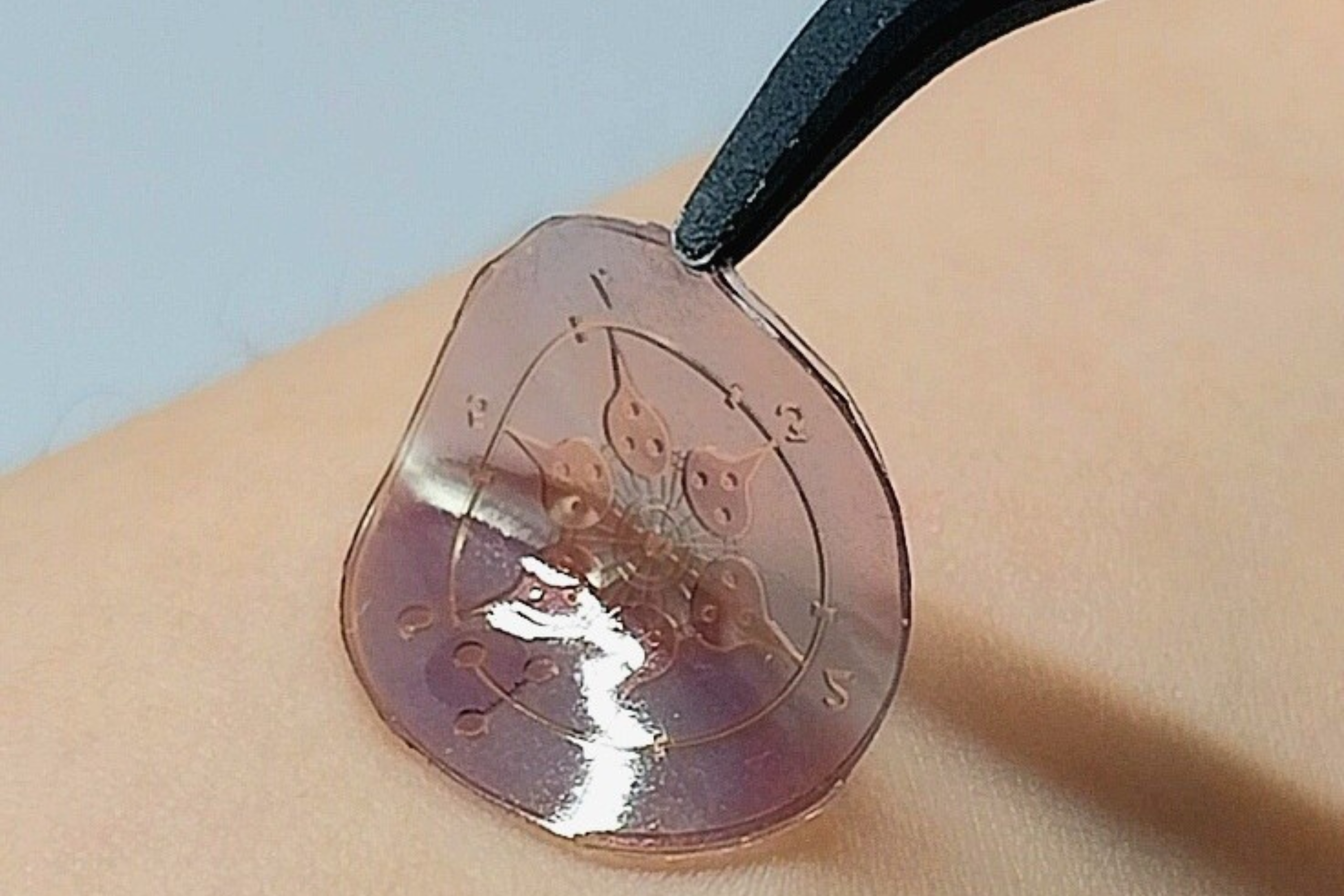
Move over blood tests, sweat could soon be the new way to assess the body’s health status.
Researchers from the Korea Advanced Institute of Science and Technology (KAIST) have developed a wearable smart patch that can precisely observe internal changes through sweat when simply placed on the skin.
“Our current patch can analyze three molecules in sweat—uric acid, lactate and tyrosine—at the same time,” study author Jaehun Jeon of the Department of Bio and Brain Engineering told Newsweek.
“Based on these, the device can provide insights into gout, muscle fatigue during exercise, liver dysfunction and metabolic disorder at its current stage.”
Looking ahead, the development is expected to improve chronic disease management and personalized healthcare technologies, according to the team.
“Because our technology does not rely on predefined molecular recognition elements, it can capture both known and unknown metabolites [molecules produced or used during metabolism] at the same time,” Jeon explained.
While sensors that use molecular recognition elements are powerful for measuring a single target molecule with high specificity, they cannot easily capture the full complexity of sweat, he explained.
“Right now, the patch is most directly comparable to a uric acid blood test, which is used for gout diagnosis. But unlike a transient blood draw, our patch can capture metabolic alterations as they change with diet or exercise, giving dynamic information blood tests cannot capture,” Jeon added.
“This also makes it possible to noninvasively monitor things like exercise intensity and digestion during assorted activities. This analysis might suggest new personalized strategies for exercise routines or diet, which with conventional blood tests is hard to provide.”
To be able to help with other conditions, expanding the number of detectable metabolites beyond three will be crucial, according to Jeon.
The current discovery, he said, “opens the door to discovering new biomarkers related to stress, sarcopenia, chronic fatigue and metabolic disorders, where reliable biomarkers are still lacking.,
“In the long term, our label-free multi-metabolite sensing platform can help identify early signs of disease and enable personalized health monitoring tailored to each individual’s unique physiology.
“In the follow-up study, if we extend the technology to include metabolites like glucose, it could also be applied to conditions such as diabetes.”
Research to develop wearable sensors that analyze metabolites in sweat to monitor the human body’s precise physiological state has already been actively pursued.
But conventional ‘label-based’ sensors—requiring fluorescent tags or staining—and ‘label-free’ methods have faced difficulties in effectively collecting and controlling sweat, the researchers explained.
This has resulted in limitations in precisely observing metabolite changes over time and in actual human subjects, hence the team’s goal to overcome this.
“Our patch introduces a new nanofabrication process that is compatible with precise microfluidic channels. This allows us to track changes in sweat metabolites without using antibodies or enzymes,” said Jeon.
“Traditional sensors are limited to single targets, while our label-free approach can capture a broad range of molecules in sweat in one measurement by applying light.”
The team developed a low-cost thin and flexible wearable sweat patch that can be directly attached to the skin by users when needed.
“The current version is designed as a single-use, disposable patch. Beyond analyzing three metabolites, it can also track sweat filling times in each microfluidic chamber, which allows us to measure sweat rate during exercise. This makes it possible to monitor hydration status and dehydration risk in real time,” Jeon explained.
The patch incorporates both microchannels for collecting sweat and an ultrafine nanoplasmonic structure—an optical sensor structure—that analyzes sweat components using light.
The patch was created by combining nanophotonics technology, which manipulates light at the nanometer scale (one-hundred-thousandth the thickness of a human hair) to read molecular properties, with microfluidics technology, which precisely controls sweat in channels thinner than a hair.
This means within a single sweat patch, microfluidic technology enables sweat to be collected sequentially over time, allowing for the measurement of changes in various metabolites—without any labeling process.
Inside the patch are six to 17 chambers, or storage spaces. Sweat secreted during exercise flows along the microfluidic structures and fills each chamber in order.
The KAIST team applied the patch to humans and succeeded in continuously tracking the changing components of sweat over time during exercise.
While previously only about two components could be checked at the same time through a label-free approach, in this study they demonstrated for the first time that three metabolites can be quantitatively analyzed simultaneously.
By using artificial intelligence analysis methods, the team was also able to accurately distinguish signals of desired substances even within the complex components of sweat.
“This research lays the foundation for precisely monitoring internal metabolic changes over time without blood sampling by combining nanophotonics and microfluidics technologies,” said study author professor Ki-Hun Jeong in a statement.
“In the future, it can be expanded to diverse fields such as chronic disease management, drug response tracking, environmental exposure monitoring and the discovery of next-generation biomarkers for metabolic diseases.”
Do you have a health story to share with Newsweek? Do you have a question about wearable health tech? Let us know via health@newsweek.com.
Reference



